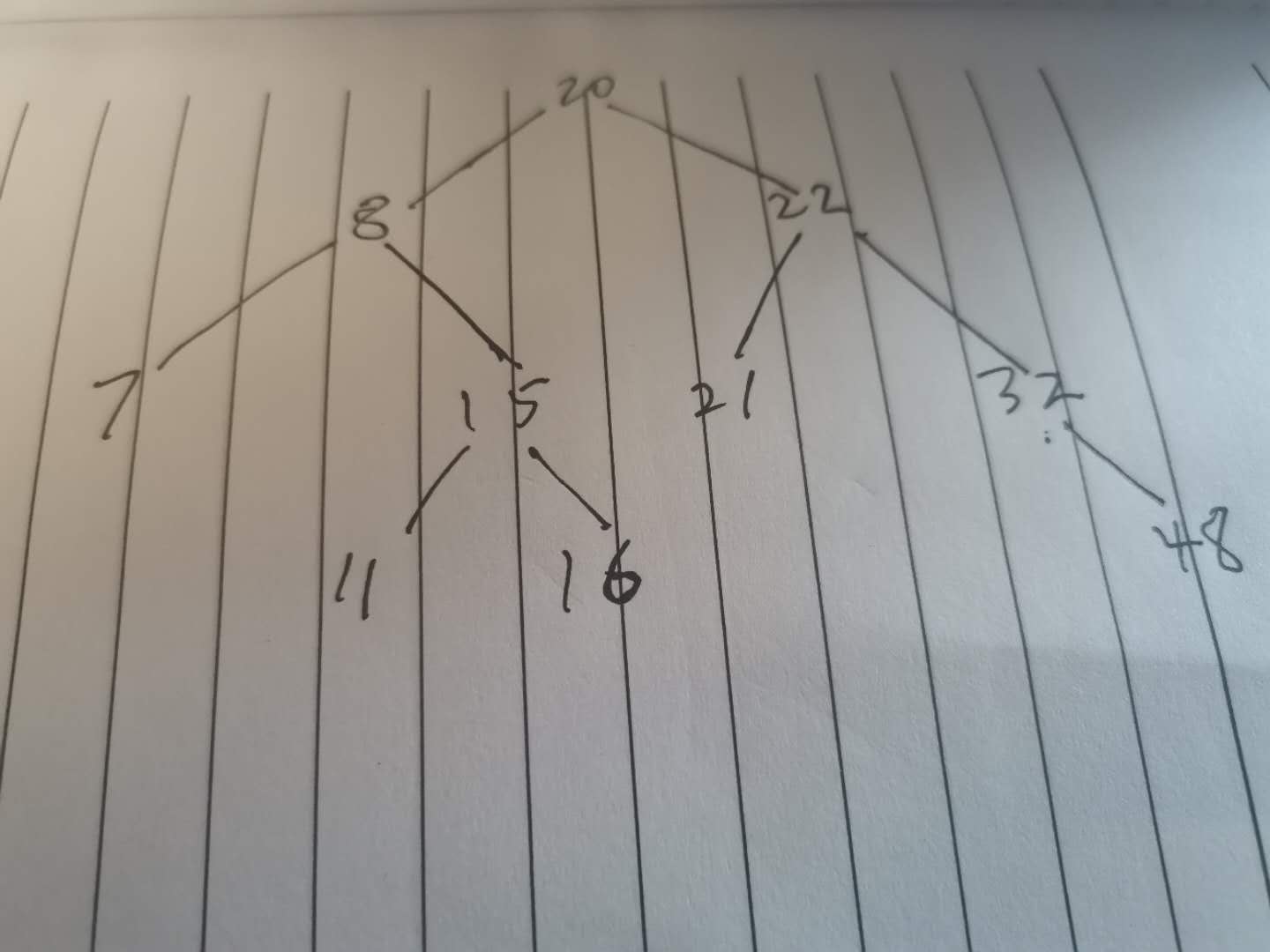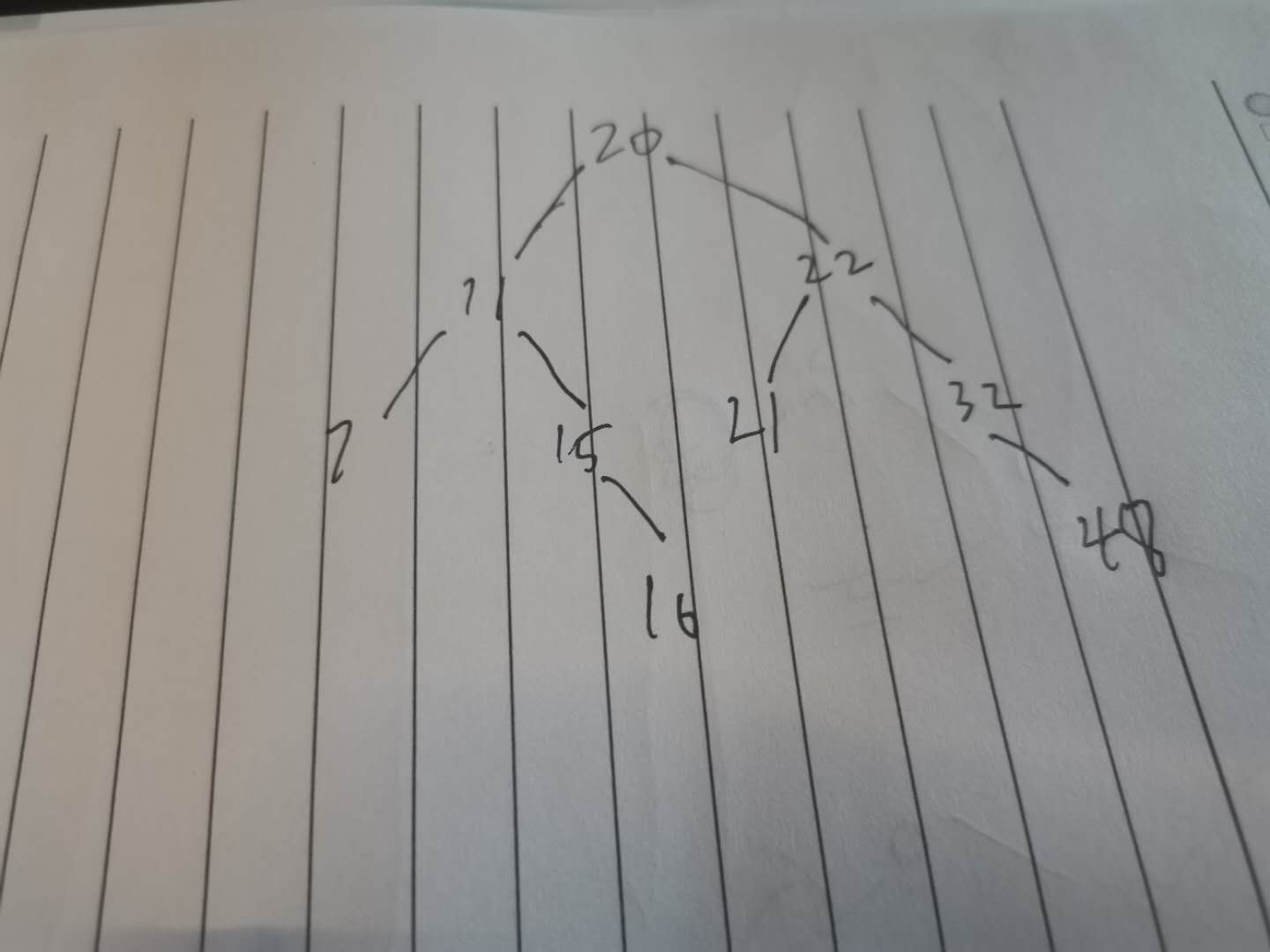二叉树实现如下
function Node(data, left, right){ // 保存当前节点key值 this.data = data // 指向左子节点 this.left = left // 指向右子节点 this.right = right } function BST() { this.root = null this.show = () => { return this.root; }; // 插入节点 this.insert = function(data){ let node = new Node(data,null,null) if(this.root == null){ // 这时没有根节点 this.root = node } else { let current = this.root let parent; while(true){ parent = current //当插入的值小于根节点的值时,将值作为左节点插入 if(data < current.data){ current = current.left; if (current === null) { parent.left = node; break; } } else { current = current.right; if(current === null) { parent.right = node; break; } } } } } // 先序遍历 this.preOrder = function(node){ let result = [] let pre = function(node) { if (node) { result.push(node.data) pre(node.left) pre(node.right) } } pre(node) return result } // 中序遍历 this.inOrder = function(node){ let result = [] let inTraverse = function(node) { if (node) { inTraverse(node.left) result.push(node.data) inTraverse(node.right) } } inTraverse(node) return result } // 后序遍历 this.afterOrder = function(node){ let result = [] let afterTraverse = function(node) { if (node) { afterTraverse(node.left) afterTraverse(node.right) result.push(node.data) } } afterTraverse(node) return result } // 获得最小值的节点 this.getMin = function() { let current = this.root while(current.left) { current = current.left } return current.data } // 获得最大值的节点 this.getMax = function() { let current = this.root while(current.right) { current = current.right } return current.data } // 寻找给定数据的节点 this.find = function(data){ let current = this.root while(current){ if(current.data == data) { return current } else if(data < current.data) { current = current.left } else { current = current.right } } return null; } // 删除节点 this.remove = function(data) { this.root = this._removeNode(this.root,data) } // 删除节点时,一共可以分为三种情况 // 1.待删除的节点是叶子节点。 // 2.待删除的节点没有左子节点,或者没有右子节点。 // 3.待删除的节点的左右子节点均存在。 this._getSmallest = function(node){ while(node.left){ node = node.left } return node } this._removeNode = function(node,data) { if(node == null) { return null } if(data == node.data){ // 叶子节点 if(node.left == null && node.right ==null) { return null } // 没有左节点的节点 if (node.left == null) { return node.right } // 没有右节点的节点 if (node.right == null) { return node.left } // 有两个节点的节点 /* 做法: 找到待删节点的右子树上的最小值创建一个临时节点 将临时节点上的值复制到待删节点,然后再删除临时节点 */ // 寻找右节点的最小值 let tmpNode = this._getSmallest(node.right) node.data = tmpNode.data node.right = this._removeNode(node.right,tmpNode.data) return node } else if(data < node.data) { // 待删节点在左子树上 node.left = this._removeNode(node.left,data) return node } else { // 待删除节点在右子树上 node.right = this._removeNode(node.right, data); return node; } } }
测试
插入节点 及 遍历
let bst = new BST() bst.insert(20) bst.insert(8) bst.insert(7) bst.insert(22) bst.insert(15) bst.insert(21) bst.insert(32) bst.insert(11) bst.insert(16) bst.insert(48)
console.log(bst.preOrder(bst.root)) // 先序遍历: [20, 11, 7, 15, 16, 22, 21, 32, 48]
console.log(bst.inOrder(bst.root)) // 中序遍历: [7, 11, 15, 16, 20, 21, 22, 32, 48]
console.log(bst.afterOrder(bst.root)) // 后序遍历: [7, 16, 15, 11, 21, 48, 32, 22, 20]
新建后的二叉排序树如下图所示

删除节点8
bst.remove(8)
删除后的二叉排序树如下图所示
